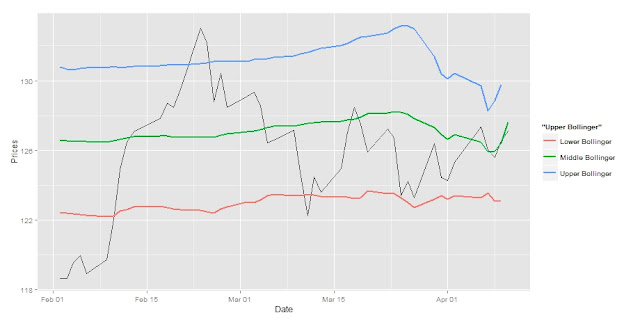Twiddle Algorithm is the simplest of "intelligent" brute force algorithms that are out there. I have written a simple code to demonstrate how the algorithm works and as a sample data set, I have taken financial stock data for the past 5 years
# Implementation of a simple Twiddle Algorithm with Simple stock data
import pandas as pd
import numpy as np
import matplotlib.pyplot as plt
%matplotlib inline
# Let us get the stock prices of around 5 companies which we thing might have some relation to each other
# TATA STEEL
# ONGC
# DLF
# SBI
# MMTC
import pandas as pd
TATA=pd.read_csv('http://real-chart.finance.yahoo.com/table.csv?s=TATASTEEL.NS&d=11&e=26&f=2016&g=d&a=8&b=17&c=2011&ignore=.csv')
ONGC=pd.read_csv('http://real-chart.finance.yahoo.com/table.csv?s=ONGC.NS&d=11&e=26&f=2016&g=d&a=8&b=17&c=2011&ignore=.csv')
DLF=pd.read_csv('http://real-chart.finance.yahoo.com/table.csv?s=DLF.NS&d=11&e=26&f=2016&g=d&a=8&b=17&c=2011&ignore=.csv')
SBI=pd.read_csv('http://real-chart.finance.yahoo.com/table.csv?s=SBIN.NS&d=11&e=26&f=2016&g=d&a=8&b=17&c=2011&ignore=.csv')
MMTC=pd.read_csv('http://real-chart.finance.yahoo.com/table.csv?s=MMTC.NS&d=11&e=26&f=2016&g=d&a=8&b=17&c=2011&ignore=.csv')
# Prepare the data frame
data=pd.DataFrame(data={'tata':TATA['Close'],'ongc':ONGC['Close'],'dlf':DLF['Close'],'sbi':SBI['Close'],'mmtc':MMTC['Close']})
# Convert the data to returns
data=data.apply(lambda x : x/x.shift(1) -1,axis=0)
data=data[1:len(data)]
code. We will now be implementing two functions
1) errorFunction
This will return the sum of squared errorsa
2) twiddle
This is the actual implementation of the twiddle algorithm
# We will now be implementing the Twiddle algorithm
import numpy as np
def errorFunction(data,vectorArray):
squares=(np.dot(data[['dlf','mmtc','ongc','sbi']],np.array(vectorArray).T) - data['tata'] ) ** 2
return np.sum(squares)
def twiddle(data,weights,dweights,weightPosDelta,weightNegDelta,debug=False):
counter=0
weightHistory=pd.DataFrame(columns=('dlf','mmtc','ongc','sbi'))
for i in range(len(weights)):
bestError=errorFunction(data,weights)
while(1):
counter=counter+1
weightHistory.loc[counter]=weights
weights[i]=weights[i] + dweights[i]
error=errorFunction(data,weights)
if(abs(error - bestError) < 0.0001):
break
if(error < bestError):
bestError=error
dweights[i]=dweights[i]*(1+weightPosDelta)
else:
weights[i]=weights[i] - (2 * dweights[i])
error=errorFunction(data,weights)
if(error > bestError):
weights[i]=weights[i] + dweights[i]
dweights[i]=dweights[i] * (1-weightNegDelta)
else:
bestError=error
if(debug):
print("The weights are {} and the error is {} ".format(weights,error))
# We will plot the individual weights
plt.figure(figsize=(20,10))
plt.plot(weightHistory['dlf'],color='b',label='DLF')
plt.plot(weightHistory['mmtc'],color='r',label='MMTC')
plt.plot(weightHistory['ongc'],color='y',label='ONGC')
plt.plot(weightHistory['sbi'],color='g',label='SBI')
plt.legend()
plt.ylabel('Weights of the explanatory variables')
plt.xlabel('Counter Index')
plt.title('Variation of weights')
plt.show()
# We will plot the final curve
plt.figure(figsize=(20,10))
plt.plot(data['tata'],color='b',label='Actual')
plt.plot(np.dot(data[['dlf','mmtc','ongc','sbi']],np.array(weights).T),color='r',label='Twiddle')
plt.legend()
plt.ylabel('Price TATA STEEL')
plt.xlabel('Date Index')
plt.title('Actual vs Predicted')
plt.show()
return(weights)
When we run the function, we will be getting the following output
1) Plot with the trend of how the individual weights evolve
2) Plot with the predicted(Twiddle) vs actual values
3) The final weights
dweights=[1,1,1,1]
twiddle_weights=twiddle(data,weights,dweights,0.1,0.1)
print(twiddle_weights)
We can see the way, the weights are recalculated. It is not a very robust algorithm, but it can be tweaked to your convenience
Play with it. A notebook is available in my github post
https://github.com/anantguptadbl/utilities/blob/master/Twiddle%20Algorithm.ipynb











